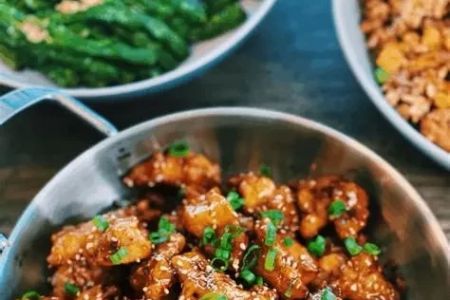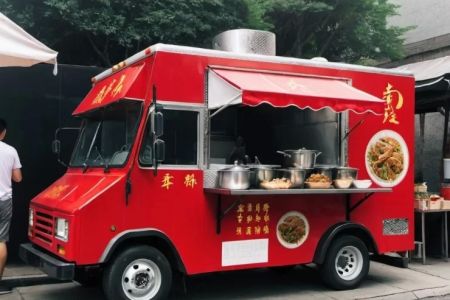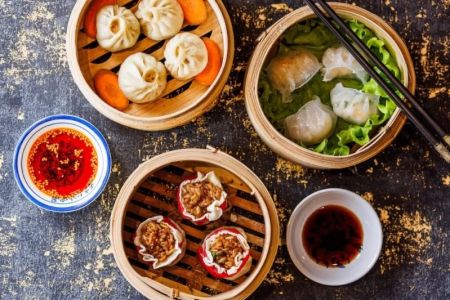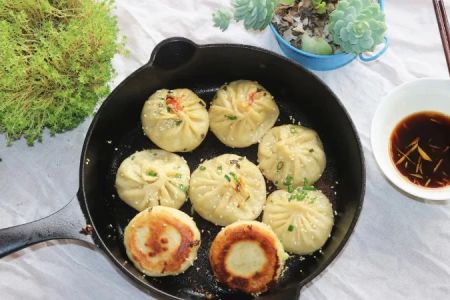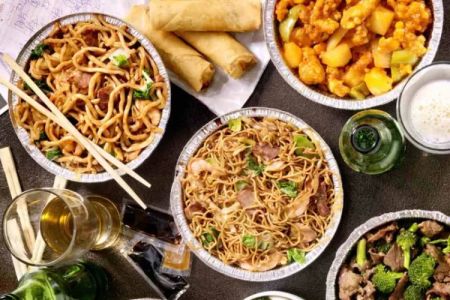- how-globalization-introduced-chinese-cuisine-to-america
- regional-chinese-flavors-meet-american-tastes
- fusion-and-fusion-restaurants-on-the-rise
- a-true-story-from-a-banquet-dinner-in-la
- how-chinese-food-platforms-help-evolve-the-trend
1. How Globalization Introduced Chinese Cuisine to America
Chinese food began landing on American plates in earnest during the mid‑19th century, when immigrants from Guangdong brought Cantonese dim sum and stir‑fried dishes. Over time, globalization accelerated that exchange—ingredients, chefs, and culinary techniques crossed borders faster than ever. Soon, federal nutrition labels, refrigerated supply chains, and bilingual menus made once-exotic flavors accessible coast to coast.
Today, globalization continues to shape Chinese food trends in America by allowing regional specialties—from Sichuan mala hotpot to Shanghainese soup dumplings—to reach cities like Chicago, Houston, and Miami in authentic and adapted forms.
2. Regional Chinese Flavors Meet American Tastes
As Americans discover more regional authenticity, adaptation still plays a big role. For example:
2.1. Sichuan Heat Meets Local Palates
Sichuan restaurants now tone down chili intensity, pairing it with familiar ingredients like roasted cauliflower or grilled beef tacos. Dishes like mapo tofu are remixed with local mushrooms or meat substitutes to suit health-conscious diners.
2.2. Cantonese Classics with Health-First Adjustments
Classic Cantonese staples—like pork ribs with black bean sauce—are sometimes reimagined with leaner meats, less salt, or steamed instead of fried methods. This reflects both health trends and evolving taste profiles in American households.
3. Fusion and Fusion Restaurants on the Rise
With globalization, fusion eateries have emerged that combine Chinese culinary foundations with American ingredients and techniques.
3.1. Chinese BBQ Burgers and Bao Sliders
Chefs in cities such as Los Angeles and New York serve fusion foods—barbecue short rib bao buns, ancho chile-chili oil burgers, or Sichuan-spiced fries. These crossovers draw foodies eager for innovation but rooted in tradition.
3.2. Tea Cocktails and Dim Sum Brunches
Dim sum brunch menus often include bubble tea cocktails, jasmine tea-infused cocktails, or plant-based shrimp dumplings. These pairings reflect both cultural curiosity and novelty-seeking in dining experiences.
4. A True Story from a Banquet Dinner in LA
At a recent wedding banquet in Los Angeles, the chef fused traditional banquet dishes with locally sourced Californian produce. Guests enjoyed lobster Cantonese-style served alongside avocado salad and quinoa. The bride’s father—who grew up eating only old-school Cantonese meals—later confessed he was surprised: “It felt modern, yet it reminded me of home.” That evening captured how globalization both preserves and transforms culinary heritage.
5. How Chinese Food Platforms Help Evolve the Trend
Platforms like Chinese Food play a key role in bridging global innovation and local discovery. By curating menus, sharing chef interviews, and highlighting neighborhood favorites, these platforms introduce trends like xiao long bao pop-ups, regional mala bases, and chef collaborations.
Whether you’re craving traditional dim sum or intrigued by North American‑style scallion pancake tacos, Chinese Food helps you navigate evolving Chinese food trends in America. With insider reviews, recommendations, and behind‑the‑scenes stories, you’ll taste the impact of globalization—one delicious bite at a time.


